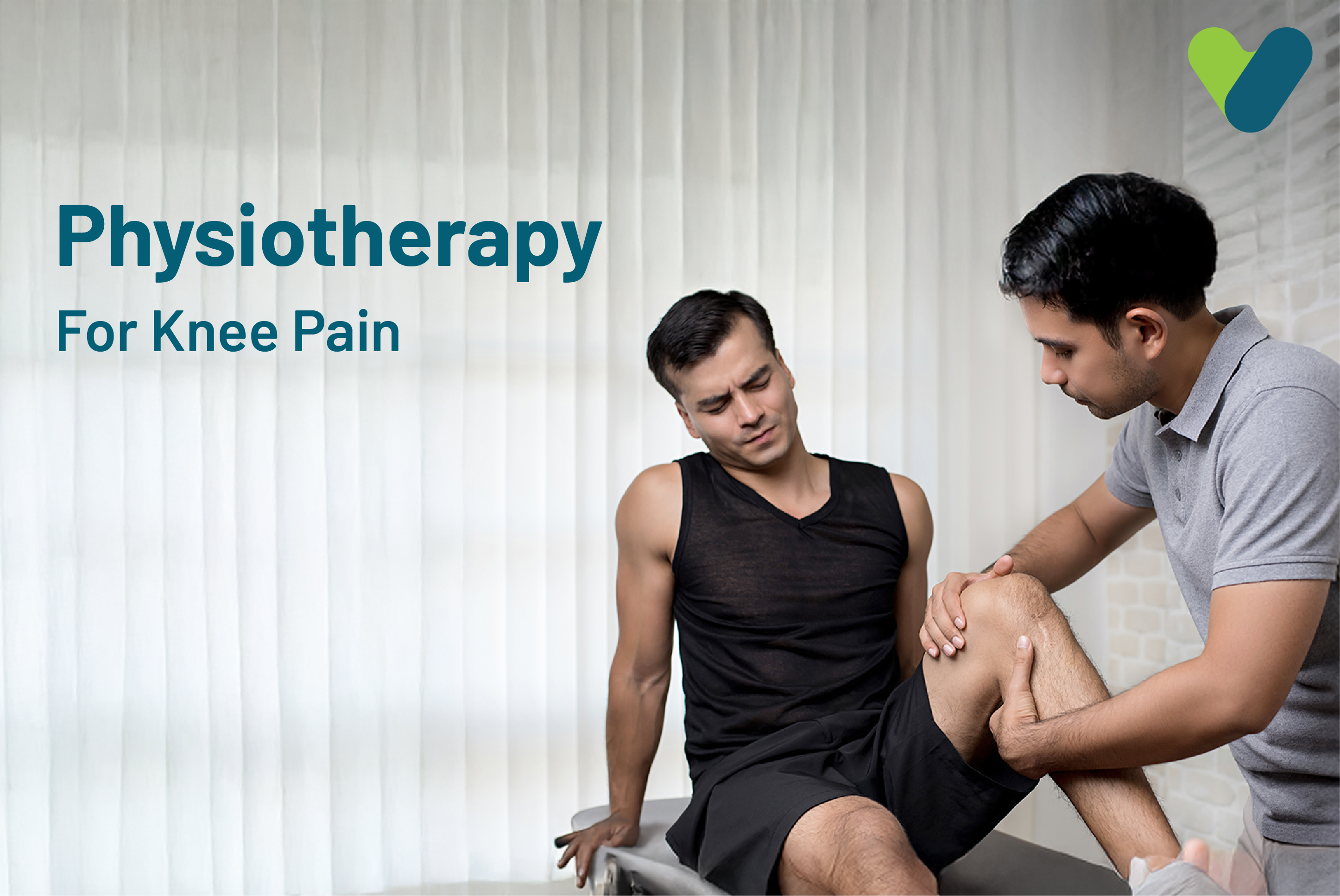Sarah winced as she climbed the stairs to her office, a familiar sharp pain shooting through her right knee. At 42, this marketing executive had been dealing with chronic knee pain for months before finally seeking physiotherapy. "I thought it would just go away on its own," she recalls. Three months later, after consistent physiotherapy sessions and dedicated home exercises, Sarah completed her first 5K run in years – pain-free.
Knee pain, or actually any form of knee-related pain, affects 25 percent of adults and increases to 40 percent in a population older than 50 years, according to the Journal of Physical Therapy Science. What is more telling, however, is that approximately 65 percent of those could have been effectively addressed through early physiotherapy intervention.
Knee Pain - Introduction
Knee Pain is rapidly becoming more common in our current society, where most people all walks of life experience their conditions at some point. Statistics from the World Health Organization, which were recently analyzed, show that musculoskeletal conditions and knee pain in general are the number one cause of disability in the world, reaching an estimated 1.71 billion people worldwide.The Power of Physiotherapy
Here is James Chen, a 35-year-old developer who was limiting his very active lifestyle with chronic pain in his knees. Now, following six weeks of targeted physiotherapy involving manual therapy exercise prescription and workplace ergonomic modifications, he is enabled to resume his rewarding active hobby, basketball, on weekends, having achieved 90% improvement in pain scores. His physiotherapist, Dr. Lisa Martinez says, "James's case is an example of how a well-structured physiotherapy program can change not only the pain in the knee but also the entire quality of life. "Physiotherapy has been at the front line of conservative treatments for knee pain and provides a scientifically proven, non-invasive approach to pain management and improvement in the condition of the patient.
Unlike medication that may mask the symptoms or surgery that can be very invasive, physiotherapy deals with the causation of the knee pain and equips the patient with long-term self-management strategies.
Knowledge Regarding Knee Pain
Before delving into further depths of physiotherapy for knee pain, it is important to first understand the basics of knee pain.Causes of Knee Pain
- Trauma Injuries
- ACL and MCL Tears: Injuries to the anterior cruciate ligament (ACL) and medial collateral ligament (MCL) often occur during activities that involve sudden stops, changes in direction, or direct impacts on the knee. ACL tear surgery is conducted to correct this.
- Meniscus Injuries: Damage to the meniscus, the cartilage that cushions the knee joint, frequently results from twisting motions or heavy impacts, leading to pain and restricted mobility.
- Fractures: Breaks in bones can happen due to falls, accidents, or severe trauma and require prompt medical attention to ensure proper healing.
- Sports-Related Injuries: Injuries sustained during athletic activities, which can include sprains, strains, and fractures, often result from overuse, improper technique, or insufficient warm-up.
- Degenerative Conditions
-
- Osteoarthritis - A wear-and-tear condition that can affect your daily life.
- Rheumatoid Arthritis - An autoimmune challenge that goes beyond just joint pain.
- Tendinopathy - Tendinopathy is a common tendon disorder that causes pain, swelling, and reduced function in a tendon. Tendinopathy can occur in any tendon, but it's most common in the shoulder, elbow, wrist, hip, knee, or ankle.
- Overuse Syndromes
- Jumper's Knee: Also known as patellar tendinopathy, this condition involves inflammation or degeneration of the patellar tendon, which connects the kneecap to the shinbone. It is typically seen in athletes who engage in sports that require repetitive jumping or quick changes in direction, leading to pain and discomfort in the front of the knee.
- Iliotibial Band Syndrome: This syndrome occurs when the iliotibial band, a thick strip of tissue that runs along the outside of the thigh from the hip to the shin, becomes tight or inflamed. It is frequently associated with activities such as running or cycling, causing lateral knee pain, particularly during movement.
- Biomechanical Issues
Muscle Imbalances: These are needed when some muscles or groups of muscles are stronger or tighter than their antagonist muscles, causing uneven strength and flexibility muscle balance.. This abnormal relationship might lead to deviations from normal movement function patterns and posture eventually cause injuries.
- Alignment Problems: This term refers to alterations in the alignment of the body structures which have influence on joints, bones and muscles. Many a times the human body develops misalignments in your body parts and they cause aches and pains in your body and could lead to development of other complications when not corrected.
- Flat Feet or High Arches: These are foot conditions which concern the structure of the foot and may affect an individual’s body posture. Structurally, flat feet consist of very small or almost absent arches hence leading to over-pronation, while high arched feet mean that some part of the feet has a tendency towards supination. They both can absolutely lead to discomfort, changes in one's walking, and can contribute to other musculoskeletal concerns.
Also Read : All About Knee Arthritis Treatment
Types of Knee Pain
Knee Pain can be classified into two types based on their severity and other causes:Acute Pain
Acute knee pain can happen because of infection or a sudden injury.
It lasts for fewer than six weeks and most often it is a signal to the body to go see the doctor- therefore it may end up being chronic
Chronic Pain
Chronic knee pain is pain that persists or recurs for more than three months.
According to the researchers at the British Journal of Sports Medicine, acute knee injuries that have not been treated become chronic 40 percent of the time.
Key Signs of Knee Pain
- Musculoskeletal Signs
- Warmth
- Morning stiffness
- Clicking or popping sound
- Functional Impairments
- Limited mobility: Knee pain can make it difficult to walk, sit, or stand.
- Balance issues: Knee pain can cause balance deficits.
- Pain that worsens over time: Knee pain can become more severe and frequent over time.
- Pain after sitting or resting: Knee pain can worsen after sitting or resting for a long time.
Physiotherapy Treatment For Knee Pain
Physiotherapy is essential for managing and reducing knee pain. It is a healthcare profession focused on diagnosing and treating physical issues using various techniques to restore function, improve mobility, and relieve pain. Physiotherapists create personalized treatment plans based on individual needs.Physiotherapy helps with knee pain through several methods. It offers pain management techniques like heat, cold, ultrasound, and electrical stimulation to reduce inflammation. Strengthening and stretching exercises target the muscles around the knee for better support and flexibility, while manual therapy techniques, such as joint mobilization and massage, improve movement and comfort.
Additionally, physiotherapists educate patients on proper posture and movements to reduce knee stress. They also provide functional training that simulates everyday activities to boost confidence and performance. Each treatment plan is customized to ensure the best outcomes for each patient.
Physiotherapy Vs Medication
Physiotherapy does not have side effects as are seen with long term medication. Its most important advantage is that it enables the development of long-term self-management capabilities.It is also cost effective in the longer run.
Physiotherapy Vs Surgery
- Treatment Approach : Physiotherapy is a completely non-invasive treatment approach whereas surgery is not.- No Surgical Recovery Required: This method also has a number of advantages, including insignificantly shorter recovery periods when compared to surgical procedures.
- Reduction in Surgical Necessity:
Physiotherapy can delay or decrease the need for surgical intervention through appropriate conservative management
- Pre- and Post-Surgery Support: These non-invasive approaches are often compulsory in amplifying the efficacy of both pre-operative and post-operative management with a view to optimizing the human body for surgical processes and bolstering the elongated recuperation process.
Also Read : All About Knee Replacement Surgery
Is physiotherapy good for knee pain?
Based on the evidence published in PTJ – Physical Therapy JournalPublished studies contain convincing evidence that physiotherapy has led to these benefits:
-Erasing 70% of chronic knee pain
-Increasing mobility by 85% functionally
-Eliminating the requirement for surgery by 60%
- Improve quality of life by 75%
Physiotherapy for Knee Pain – What to Expect
Intake and DiagnosisBefore the Physiotherapy based treatment for Knee Pain of any patient is started, there are some procedures that are followed. They are :
Thorough Intake Screening
- Patient History
- How the symptoms began and what they are
- Past treatment
- Patient lifestyle and activity level
- Aims and expectations
- Physical Examination
- Strength testing
- Palpation
Specialized tests for particular disorders
Functional movement analysis
Personalized Treatment Program
Every rehabilitation plan is personalized based on:
Severity of the disorder
Type of disorder
The patient's age and level of fitness
Client demands of lifestyle
Client's personal goals
Time the client can utilize for therapy
Advanced Assessment Techniques
- Movement Analysis
Functional movement screening
Balance assessment
Sport-specific movement assessment
- Specialised Tests
Muscle length testing
Neural tension assessment
Proprioception testing
Physiotherapy for Knee Pain Treatment Parameters
- Session Frequency
- Progressive phase: 1-2 times/week
- Care:
Home program: Daily
- Durations of Treatment
Chronic conditions: 8-12 weeks
Post-surgical: 12-16 weeks
Prevention: Continual
Also Read : All About Partial Knee Replacement Surgery
Physiotherapy For Knee Pain Treatment Methods
Hands-on TherapyJoint Mobilization
Soft pendular oscillations
Grade-specific methods
Pain-free range enhancement
Enhanced nutrition to the joints
Techniques on Soft Tissues
Massage treatment
Trigger point release
Myofascial release
Stretching techniques
Physiotherapy Exercises for Knee Pain
Strengthening Exercises- Strengthening of the Quadriceps
- Wall slides
- Terminal knee extension
- Step-ups
- Hamstring Strengthening
- Nordic hamstring curls
- Swiss ball curls
- Resistance band exercises
- Hip and Core Strengthening
- Side-lying leg raises
- Planks
- Bird dogs
Stretching Exercises
- Static Stretching
-Hamstring stretch
-Calf stretch
-IT band stretch
- Dynamic Stretching
-Walking lunges
-High knees
-Butt kicks
Aerobic Conditioning
Low-impact activities
Swimming
Cycling
Elliptical training
Physical Therapeutic Agents
Thermotherapy
- Heat Therapy
- Relax the muscles
- Improves elasticity in tissues
Suitable for chronic conditions
- Cold Therapy
- Numbs pain
- Swelling is reduced
Ideal for acute injuries
Electrotherapy
- TENS (Transcutaneous Electrical Nerve Stimulation)
Muscle stimulation
Improved blood flow
Non-medication method of pain management
- Ultrasound Therapy
Reduced healing time
Reduced inflammation
Improved tissue regeneration
Patient Education
Activity Modification
Job modifications
Sport technique changes
Modifying daily activity
Energy conservation measures
Ergonomic Counselling
Sitting posture
Configuration of the workstation
Lifting
Sleep position
Home Exercise Programs
Must Have Elements
- Proper Gradation
Accurate criteria for movement to the next level
Safety guidelines
- Documentation of Exercises
Photographs and videos
Exercise diary
Tracking of progress
Also Read : Home Remedies for Knee Pain
Motivation Strategies
- Goal Setting
Long-term goal
Regular progress review
Success time
- Adherence Tips
Use reminder apps
Do workouts with a partner
Keep track of achievements
How to Prevent Knee Pain?
Following are some preventive measures to avoid knee pain :- Regular Exercise
Maintenance of flexibility
Cardiovascular fitness
Core stability
- Use Suitable Equipments
- Activity-specific dress
- Sizing
- Periodic replacement
- Follow Proper Protocol While Exercising
Start exercising by firstly doing some warm-up exercises. Following are the steps :
- Dynamic Warm-up Steps
- Joint mobility exercises
- Dynamic stretching
- Sport-specific movements
After you are down with your exercise, cool down your muscles and body by following the following cool down routine:
- Cool-down Routine Steps
- Gentle movement
- Recovery exercises
- Self-massage
Also Read : Exercises for Knee Arthritis
When to Consult a Physiotherapist For Knee Pain
Following are some significant indicators that you need to consult a Physiotherapist for your knee pain :
- Pain Patterns
- Worsening symptoms
- Night pain
- Activity-limiting pain
- Functional Issues
- Decreased performance
- Balance problems
- Weakness
Knee pain is best treated with physiotherapy, which is an effective and research backed therapeutic practice. The main goal is achieved with the help of the integrated intervention that includes manual therapy and exercises and patient education targeting significant changes in patient’s pain, function and quality of life. . An absolute guarantee of successful management would be early intervention, adherence, and prevention.
References:
- Treatment for knee pain. Chartered Society of Physiotherapy (CSP) [Internet].
- Anterior Knee Pain. Physiopedia[Internet].
- Effectiveness of Physiotherapy Management in Knee Osteoarthritis. Indian Journal of Medical Specialities [Internet].


